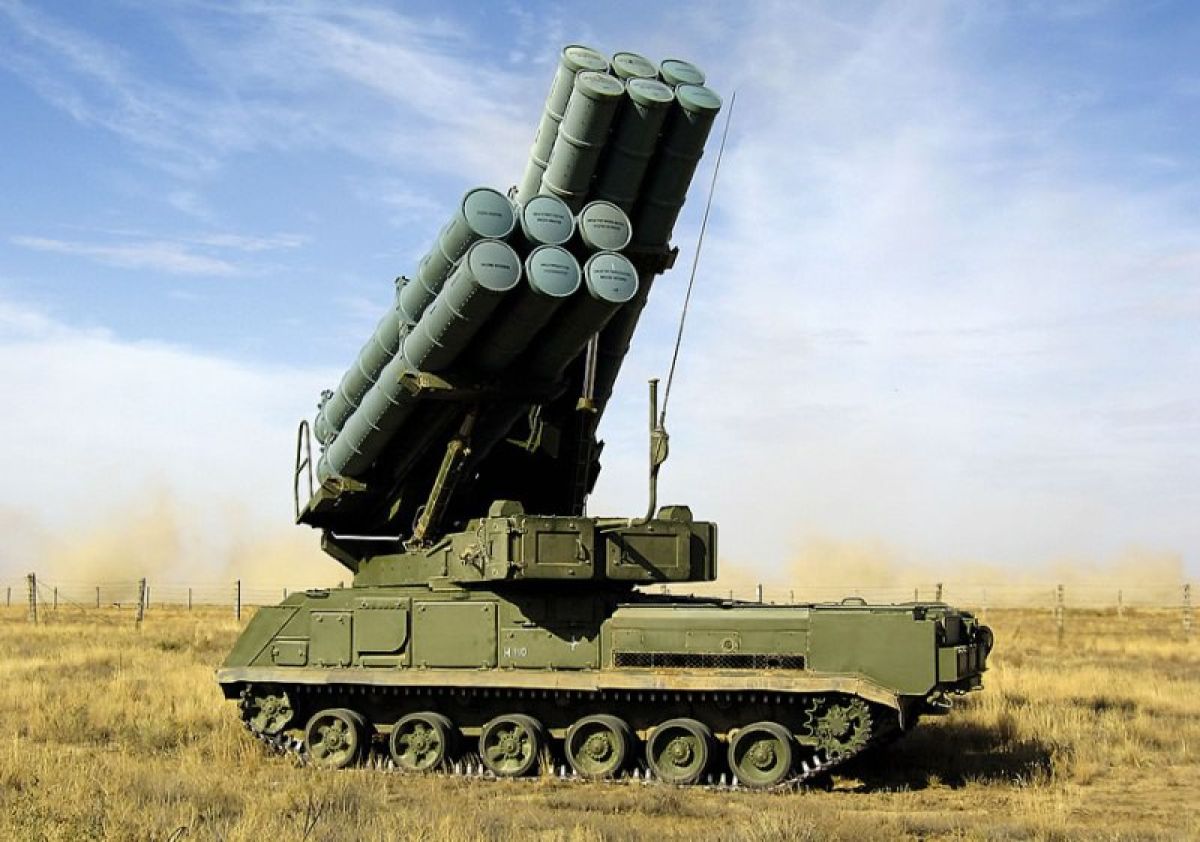Just a few months after it was first announced, the FrankenSAM air defense system, a US-Ukraine hybrid solution for air defense against Russian aerial strikes, has already made its testing debut, according to reports circulating in local Ukrainian media.
Oleksandr Kamyshin, Ukraine’s Minister of Strategic Industries, noted that the FrankenSAM hybrid air defense system’s initial “sprouts” are already in action on the front lines of combat.
“The first solutions from the FrankenSAM project portfolio are already operating on the battlefield. In the United States, with the minister of defense, we saw systems developed jointly by Ukrainian and American companies. And at the same time, they are now operating on our frontline. They can protect critical infrastructure and cities. These solutions allow us to have our rapid air defense,” Kamyshin was reported as saying by local sources.
EurAsian Times could not independently verify these claims. However, as soon as the news broke out, social media was abuzz with speculations by military analysts and netizens that the system may have been deployed on the frontline to test it.
The frontline in Ukraine has become a testing ground for an array of cutting-edge weapons fielded by both sides.
Some military watchers went so far as to say that at least a few of the recent barrage of drones and missiles unleashed by Russia on Ukrainian targets may have been shot down using this newly-created hybrid air defense system.
🇺🇦 Minister for Strategic Industries Olexander Kamyshin:
🇺🇸 "Ukrainian-American air defense project "FrankenSAM" is already operating on the battlefield" pic.twitter.com/mnHS1thYbn
— MAKS 23 👀🇺🇦 (@Maks_NAFO_FELLA) December 27, 2023
Speaking at a press conference on December 27, Kamyshin stated that five quick “hybrid” solution projects have been established between the US and Ukraine to improve the country’s air defense significantly, Ukrainska Pravda reported.
“The main advantage of such solutions is speed. It takes three to four years to develop a new air defense system. And we are already receiving finished products,” the minister said.
I was thinking…
Maybe the FrankenSAM system was used to take them down 🤔 pic.twitter.com/6cptYIB5xC
— Fator Binario (@fatorbinario) December 22, 2023
He elaborated on these hybrid systems: “There are various short-, medium- and even long-range projects. We do not want to compete with our partners but rather create a new market they could not enter. We get a rapid air defense upgrade, and they get the opportunity to integrate their systems into new markets.”
The announcement comes when Russia has been relentlessly targeting Ukrainian cities with its cruise and ballistic missiles as well as one-way suicide drones. A deadly missile attack on the capital city of Kyiv earlier this month ended up killing at least 53 people in the hospital.
Not just that, in a recent report, the Ukrainian Air Force noted that throughout its 22-month invasion, Russia has fired 3,700 Shahed attack drones and nearly 7,400 missiles at locations in Ukraine. Out of these, it said that Ukrainian air defenses shot down 2,900 drones and 1,600 rockets.
However, with hostilities refusing to cease, these attacks have intensified, causing concern that it could lead to a situation similar to last winter when swarms of drones and missiles launched by Russian troops targeted Ukrainian energy infrastructure and left most of the country without power in a very harsh winter. These strikes aimed to restrict Ukraine’s military operations, and Kyiv speculates that Moscow will seek to do the same again.
Ukraine has been pleading for more air defense systems from its partners in NATO. Similarly, the FrankenSAM system is believed to be an attempt at bolstering Ukraine’s air defenses with the resources already available in the Ukraine and US inventories as demand grows exponentially.
The FrankenSAM Program
The amount of Ukraine’s Soviet-legacy air defense is steadily declining, and the amount of Western AD entering the country is limited. Analysts have observed that after the Cold War ended, most NATO nations have not made the necessary investments to create and maintain a strong AD network. As a result, they can only supply Ukraine with a restricted amount of stocks.
Due to a lack of easily accessible air defense systems, the US pledged the technology supply for Ukraine’s “FrankenSAM” Air Defense Systems, which are essentially just hybrid air defense systems. The decision was made to fulfill the rapid demand and the inability to supply cutting-edge Western air defense systems in more significant numbers.

Three variants of the US-implemented FrankenSAM project are US Sea Sparrow missiles integrated into Soviet-era Buk launchers, the US Sidewinder air-to-air missile coupled with a Soviet radar, and an additional, classified as the most capable project, which is kept under wraps.
To address the urgent operational needs of the Armed Forces, including in the areas of air defense systems, repair, maintenance, and production of critical munitions, the White House announced that Ukraine and the United States had signed a statement of intent on joint production and exchange of technical information.
In an interview with Financial Times, an unnamed official noted that Kyiv is giving its US-supplied AIM-9 air-to-air missiles, supposedly “out of operation,” a second lease on life by employing them in surface-to-air missions. The official said, “We fixed them,” to the publication. “We found a way of launching them from the ground. It’s a kind of self-made air defense.”
This is just one of the many facets of this hybrid arrangement. The minister recently stated that integrating elements of Western air defense systems into outdated Soviet systems—many of which are still in use by the Ukrainian Armed Forces—is the fundamental goal of all projects undertaken under the joint FrankenSAM program.
Citing an example, he said some initiatives merely deploy American missile containers on outdated Soviet launchers. At the same time, other solutions include the American launcher fleet into a single S-300 air defense system. The minister stated that the initial systems had already begun functioning in Ukraine and that more would arrive each month.
- Contact the author at sakshi.tiwari9555(at)gmail.com
- Follow EurAsian Times on Google News




